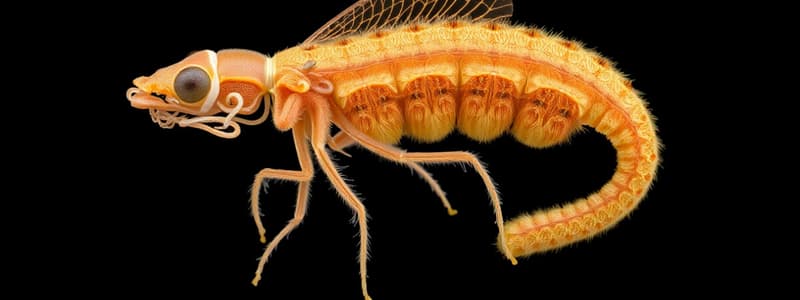Podcast
Questions and Answers
What is the system used to name organisms developed by Carolus Linnaeus?
What is the system used to name organisms developed by Carolus Linnaeus?
- Universal Naming
- Morphological Classification
- Binomial Nomenclature (correct)
- Common Nomenclature
The two most specific categories in naming organisms are __________ and __________.
The two most specific categories in naming organisms are __________ and __________.
genus, species
How many kingdoms are currently used to classify living organisms?
How many kingdoms are currently used to classify living organisms?
Six
The kingdom Eubacteria is part of the domain Eukarya.
The kingdom Eubacteria is part of the domain Eukarya.
What mnemonic device can help remember the order of classification?
What mnemonic device can help remember the order of classification?
What type of cells do organisms in the domain Eukarya have?
What type of cells do organisms in the domain Eukarya have?
Match the following groups to their corresponding characteristics:
Match the following groups to their corresponding characteristics:
Study Notes
Overview of Taxonomy
- Taxonomy involves classifying and naming living organisms to avoid confusion caused by common names across cultures.
- Carolus Linnaeus introduced binomial nomenclature, a universal naming system using two names: genus and species.
- Scientific names are written in italics, with the genus capitalized (e.g., Felis catus for house cat).
- Linnaeus classified over 11,000 organisms based on morphology, although modern classification also incorporates genetics.
Hierarchical Classification
- Linnaeus created a hierarchical system with levels arranged from broadest to most specific: kingdom, phylum, class, order, family, genus, species.
- The mnemonic "Kings Play Chess On Fat Guys' Stomachs" helps recall the order of classification.
- Each level provides an increasing specificity of identification, akin to a detailed address system.
The Six Kingdoms
- Life classification has evolved from two kingdoms (plants and animals) to a system of six kingdoms today:
- Archaebacteria (ancient, prokaryotic, unicellular)
- Eubacteria (true bacteria, prokaryotic, unicellular)
- Protista (eukaryotic with plant-like, animal-like, and fungi-like groups)
- Fungi (eukaryotic, heterotrophic, non-photosynthetic)
- Plants (eukaryotic, photosynthetic)
- Animals (largest kingdom, eukaryotic, multicellular, heterotrophic)
Domains
- Modern taxonomy includes three domains as a broader classification level:
- Domain Bacteria includes the kingdom Eubacteria.
- Domain Archaea includes the kingdom Archaebacteria.
- Domain Eukarya encompasses Protista, Fungi, Plants, and Animals, all of which have eukaryotic cells.
Summary
- Taxonomy simplifies biological classification using binomial nomenclature and a hierarchical structure.
- Understanding scientific names and classification levels is foundational to studying biology.
- The current taxonomy recognizes six kingdoms organized into three domains, reflecting evolutionary relationships and cellular structure.
Studying That Suits You
Use AI to generate personalized quizzes and flashcards to suit your learning preferences.
Description
Explore the fascinating world of taxonomy, the science of classifying and naming living organisms. This overview covers the importance of standardized naming conventions and the complexities that arise from common names across different cultures. Perfect for students looking to understand biological classification.




